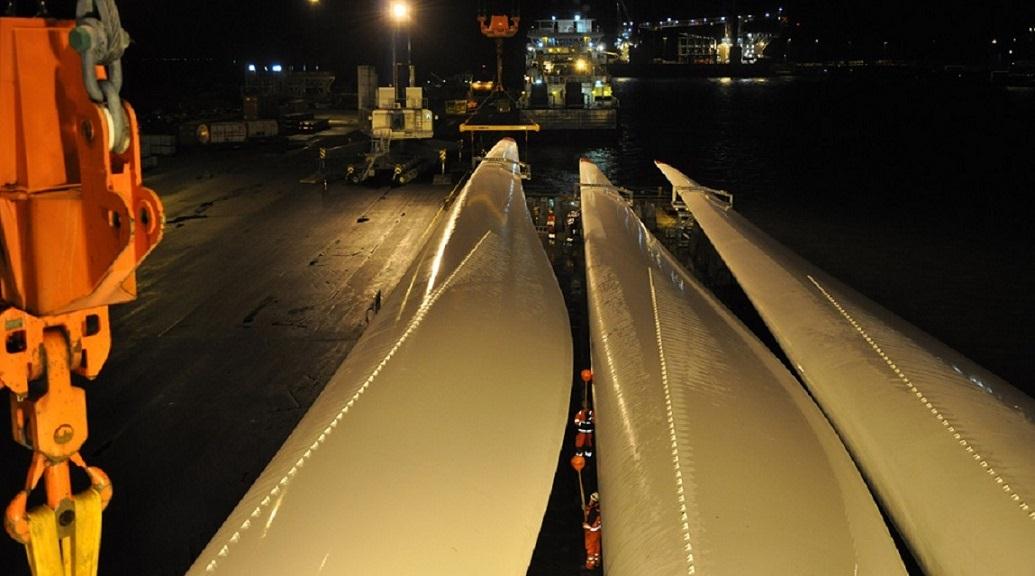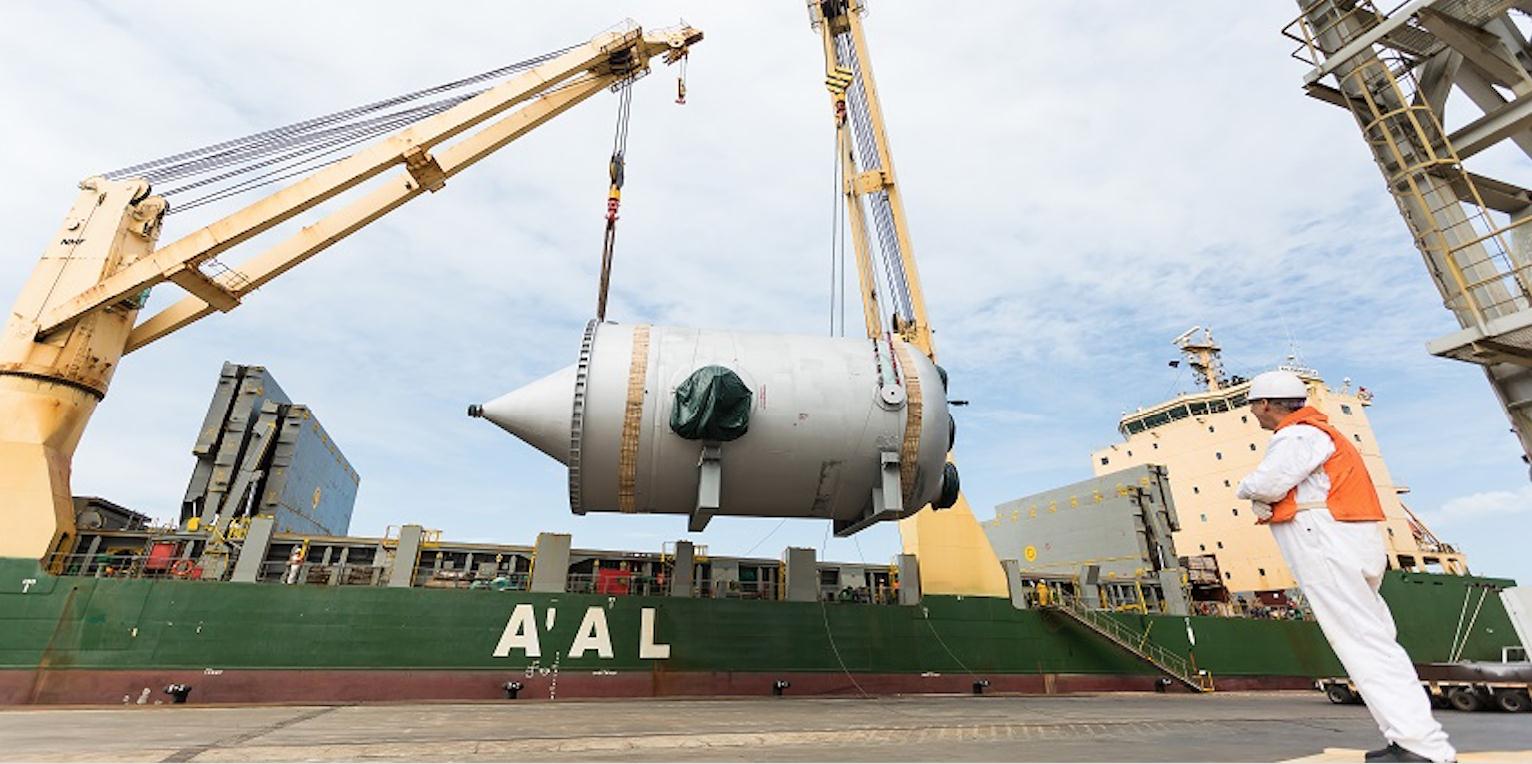With individual cargo pieces and total consignment volumes for projects in many industry sectors across Asia and worldwide continuing to get larger, logistics providers handling that traffic are constantly having to respond to new challenges.
Key requirements in that context include a need to keep developing additional operational solutions to ensure the efficient transport of such cargo and to put an even greater focus on related HSE (health, safety and environmental) matters.
Those trends are currently particularly apparent in the wind energy industry where components for offshore installations now include turbine blades of over 88 metres in length, monopiles (steel foundation structures) weighing as much as 1,300 tonnes and transition pieces (structures fitted on top of the monopiles) measuring more than 33 metres in height and weighing over 500 tonnes.
Some of the resulting logistics implications for companies contracted to transport wind energy cargo were outlined by Peter Ehrhorn, global director, special projects, chartering & wind logistics, for Blue Water Shipping (BWS) which is involved in both offshore and onshore wind projects worldwide.

“The wind turbine components we are shipping on behalf of our clients are getting bigger and bigger – and that trend will continue for some time,” he confirmed. “The growing size of those components creates challenges when it comes to the handling of projects, particularly in relation to the port infrastructure and vessels required.”
Those trends were highlighted earlier this year when BWS reported it had just transported three of the world’s longest wind turbine blades, each measuring 88.4 metres and weighing around 34 tonnes, between Denmark and Germany, using a chartered open deck vessel. According to BWS, it was the first time blades of that length had been transported by sea.
The loading operation, in the Danish port of Esbjerg, was executed by BWS itself, while the discharge in the German port of Bremerhaven was handled by the company’s recently formed offshore wind industry logistics joint venture in that country, BluewaterBREB.
The challenges which can arise when handling such large project cargo items were illustrated by the fact that the discharge operation involved using two floating cranes operating as one unit to place the blades on a specific quay with shallow water.
Ehrhorn went on to point out that the increasing size of wind turbine components in general had an impact on BWS’s approach to HSE. “The turbines are massive and we carry out many heavy lift and transport operations every day. Taking the highest care of HSE is our biggest and most important commitment.”
The advent of ever larger project cargo units is also apparent in other major industry sectors such as mining, oil and gas/petrochemical, power generation and general infrastructure construction.
The development of that trend in the mining sector, for example, was confirmed by Martyn Lawns, global head of engineering, manufacturing and mining sector – industrial projects group, for DHL Global Forwarding.
“For new mining industry projects, we are seeing a reversion back to larger pieces of equipment being shipped to site in modular form to reduce the cost of moving specialist construction and engineering labour to remote locations to do the final fabrication on site,” he stated.
“We are definitely getting more requests now to move final assembled units from the fabrication yard to mine sites so the cargo size we have moved so far this year is definitely larger and the prospect is that will continue.”
Recent examples of large oil and gas/petrochemical sector project cargo shipments include one reported in May by Singapore-headquartered multipurpose shipping operator AAL. That operation involved transporting two large cyclone vessels (each measuring approximately 22m x 11m x 10m and weighing over 500 tonnes) on behalf of forwarder Oceansmart Global from Taiwan to Malaysia for a Petronas US$27 billion refinery and petrochemical integrated development project in Pengerang, Southern Johor. The vessels were loaded on the AAL Freemantle in the Taiwanese port of Mailiao using that ship’s combined 700-tonne cranes to lift and stow the cargo in one of its three large box-shaped holds and weather deck, respectively.

More recently still, in June, AAL announced the completion of a massive nine-month project shipment for the power generation industry, although the key feature of that cargo was the overall volume rather than individual item size.
That operation, for LPL Projects + Logistics, involved transporting nearly 195,000 freight tons of HRSG (heat recovery steam generator) modules and related accessories from South Korea and China to Egypt to be used in the construction of that country’s largest-ever power generation project. The cargo comprised 384 HRSG modules and 45,000 freight tons of accessories, transported on 17 sailings between August 2016 and May this year.
The trend towards larger pieces of project cargo in the infrastructure construction sector was highlighted by Christian Hoffmann, head of marketing and corporate communications for Germany-based SAL Heavy Lift, part of Japanese global shipping group K-Line, which specializes in transporting heavy lift and project cargo.
“We are seeing the scope of construction projects becoming significantly bigger and more complex, with the structures tending to grow in size and weight, whether they are wharf modules, cranes, foundation structures or other units,” he stated.
As an example, he quoted SAL’s recent transportation on one of its ships of a large container bridge crane from Kaohsiung to Nagasaki. “The transport operation was tricky due to the dimensions of the bridge – it was 56.2m x 78.2m x 27.4m and weighed 650 tonnes. With a 78.2m beam, it had a quite substantial overhang on both sides of the vessel,” he said.
“In addition, it was a very sensitive structure to lift and transport, so it required quite a bit of ‘re-engineering’ from our end to strengthen the unit at its weakest points.”
Hoffman also highlighted the growing focus on HSE issues relating to project cargo when he outlined some of the latest trends in another major industry generator of such business, the oil and gas sector.
“The requirements placed on us as shipping providers have increased significantly, both in terms of certification requirements, documentation and HSSE (health, safety, security and environment) requirements and in relation to general project and contracting scope,” he stated.
“The expectations and requirements will likely become even higher in the years to come as legislation becomes stricter and oil and gas EPCs (engineering, procurement and construction contractors) and utility companies become more risk averse.”
The requirement for companies handling project cargo to further improve the environmental performance of such operations was also spotlighted by DHL Global Forwarding’s Lawns when he commented further on some of the current trends in mining industry logistics. “More and more we are having discussions with our customers about what we as logistics providers can do in terms of offsetting the environmental impact of our services,” he reported.
By Phil Hastings
Europe Correspondent | London




